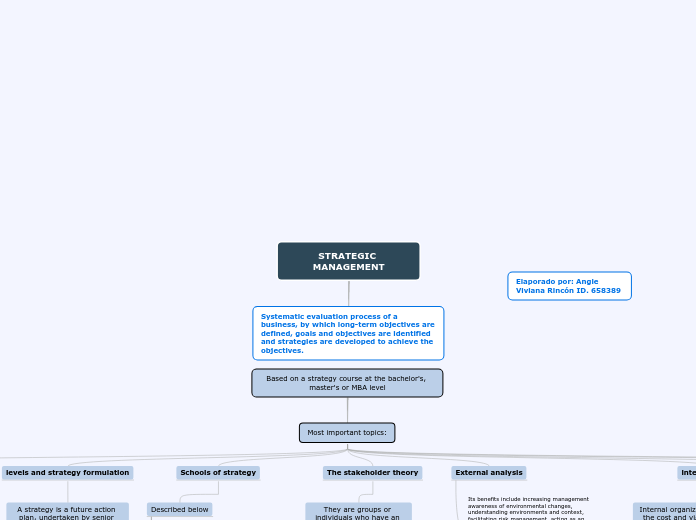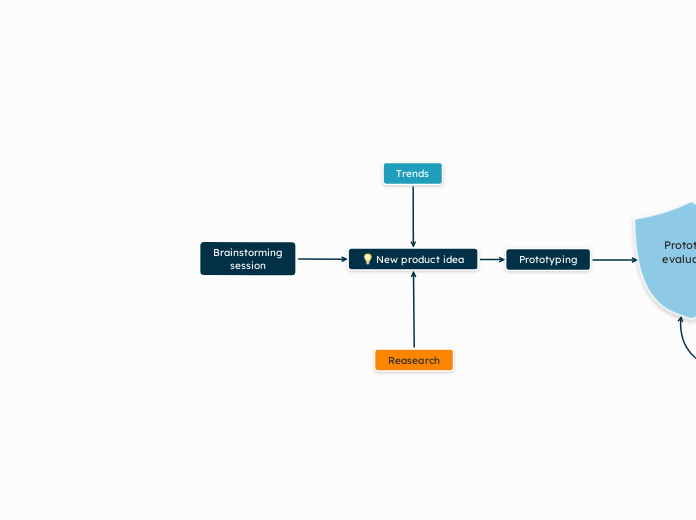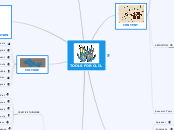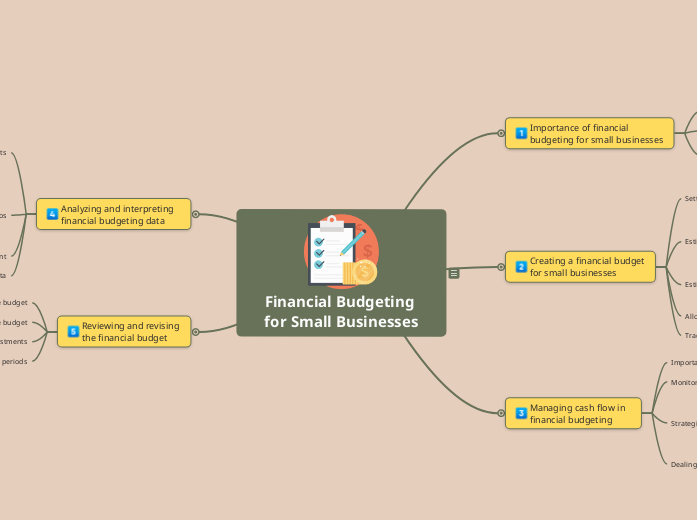Elaporado por: Angie Viviana Rincón ID. 658389
Based on a strategy course at the bachelor's, master's or MBA level
Most important topics:
strategy implementation
This process has several parts:
3. The systems used to manage the organizations can be improved.
2. the organizational structure may need to be changed
1. Resource planning and implementation logistics.
Managerial interests and wishes: (what the organization wants to do)
Social responsibility: what the organization should do
skills and resources (what the organization can realistically do)
generic strategy
A well-formulated strategy seeks to build distinctive competence in some key activity and then use it to create a competitive advantage over other companies.
generic strategies are widely applicable to companies of all sizes and in all industries.
There are two types of competitive strategies:
Differentiation
It enables the company to make efforts to distinguish its products from those of its rivals.
Leadership
It aims to achieve a competitive advantage by providing a product or service at a lower cost than rivals.
SWOT analysis
Analyze internal strengths and weaknesses and external opportunities and threats.
With the purpose of:
Identify strategies that adjust or match the resources and capacities of the organization with the demands of the environment in which it competes.
In this it is necessary to take advantage of the strengths and opportunities, counteract the threats and correct the weaknesses of the organization.
External
Threats
Entry of new competitors, substitute products, slow market growth, demographic changes, changes in buyer needs and tastes, among others.
Opportunities
Ability to expand into new markets, expand product line, drop trade barriers, ability to grow rapidly, new emerging technologies, among others.
Internal
Weaknesses
The strategic direction is not clear, obsolete facilities, profitability problems, lack of skills and competencies, weak market image, high costs, among others.
Strengths
Basic skills, adequate economic resources, market leaders, functional area strategies, access to economies of scale, proprietary technology, innovation skills, among others.
internal analisis
Internal organization can affect the cost and viability of some strategies
culture
Set of beliefs, customs, practices and ways of thinking that are shared through work and coexistence.
There are two types:
Corporate
it is seen as four types of power and control operated through organizational structure.
Organizational
It's a deeply ingrained unconscious pattern
Each of the organization's activities can be considered as an added value to the products.
Support activities
infrastructure
Human resource management
Technological development
Acquisitions
Main activities
service
Sales Marketing
outbound logistics
the incoming logistics
External analysis
Its benefits include increasing management awareness of environmental changes, understanding environments and context, facilitating risk management, acting as an early warning system.
In this there are two levels:
The nearby environment
Purchasing power
It depends on: knowledge of the buyer, size of the purchase, function of the product, degree of concentration of the buyer in an industry.
Provider power
Determined by factors such as: importance of the product, switching costs, degree of concentration of the supplier in an industry and ability to supply.
Competitive rivalry
The intensity of the competition depends on factors such as: whether or not there is a leader, the presence of exit barriers, the importance of fixed costs to determine the capacity, the grade of the product.
Entry barriers
The higher they are, the greater the potential profitability of companies in the industry.
includes factors such as: capital requirements, economies of scale, differentiation, switching costs, brand identity, access to distribution channels, threat of retaliation.
The distant or macro environment
PEST. Political, economic, social and technological influences
STEEPLE
GASTADO
STEEPV
PESTEL
The stakeholder theory
They are groups or individuals who have an interest in the welfare of the company
classification
External stakeholders: governments, lobby groups, etc.
Governments, pressure groups.
connected stakeholders:
Customers and end consumers, suppliers, competitors
internal stakeholders:
Entrepreneurs, managers, non-managerial employees, employees.
Schools of strategy
Described below
The resource-based school
Look at the internal environment instead of the market, approach from the inside out.
Competitive advantage is based on your own distinctive resources, capabilities and competencies.
The positional school
Porter Competitive Advantage Factors, BCG Matrix, GE Matrix
It is based on performance measurement tools and decision making
tries to place the organization and products in a favorable market
the focus is on a rational and analytical approach to strategy making
The planning school
Requires detailed and flexible planning
Seeks a fit between the organizational strategy and its environment
Use a bureaucratic and rational way
It is based on past trends, forecasts, and stable structures and environments.
levels and strategy formulation
A strategy is a future action plan, undertaken by senior management, seeking to achieve goals and objectives by giving a sense of purpose and direction to the organization.
They may be:
Other types of strategic formulation
Adaptive mode
Crafts
Logical incrementalism
Muddling through,
Strategy types
Imposed strategy can be imposed on the organization.
Opportunistic strategy, can arise in a business way, taking advantage of changes in the environment or recognizing new skills in an opportunistic way. active search for new opportunities.
Emerging strategy, there is a corporate intention followed by its implementation
Purposeful and deliberate strategy, arise from precise intentions, written and imposed by a central leadership
Strategy Lessons
Operational or functional strategies, examines the different functions of the business identifying support for corporate and commercial strategies.
Commercial or competitive strategy, products or services to be developed.
Corporate strategy, related to the formula and future structures of the company
Strategy process
The strategic direction is the organized development of the resources of the functional areas in the achievement of objectives, guiding the scope and direction of the entity.
The basis of the strategy: structure
Structure is the assignment and control of work tasks and there are two structures: vertical and horizontal
Complex forms of organization
Complex forms seek to overcome deficiencies of other structures through the collaboration of existing organizations.
forms of complex organization:
Alliances
Consortia
Joint Ventures
Mergers
Matrix structure
seeks to add flexibility and lateral coordination to the traditional vertical hierarchy.
people can have dual roles.
Hampered professional development, confusion, project managers reluctant to impose authority.
Improves decision-making, direct contact, improves communication and cooperation, adaptation to changing environments, unknown and unexpected problems.
Graphic structure
Organizations with few products group activities according to the sales area in search of being closer to the customer.
Product structure
People and resources are grouped according to the product. This format is very successful when there is a variety of products, of which are directed to different markets.
Estructura Divisional
It helps to overcome limitations of the functional structure because it contains functional specialists who group their activities around products or geographic regions.
There can be costly duplication of resources between departments, competing demands from people create stress.
too much control stifles innovation.
coordination between functional departments, product or project identification, adaptation to changing environments.
Functional Structure
Divide the organization into its main activities or functions, a manager is in charge of each function under the control of the senior manager.
Disadvantages
Greater need for interdepartmental coordination and programming, conflicts, little creativity and innovation.
Advantage
Resources used efficiently, wide division of labor, encourages communication between specialists, promotes economies of scale, among others.
STRATEGIC MANAGEMENT
Systematic evaluation process of a business, by which long-term objectives are defined, goals and objectives are identified and strategies are developed to achieve the objectives.
